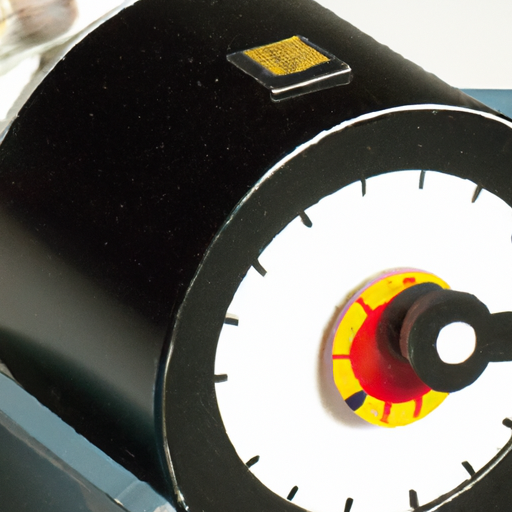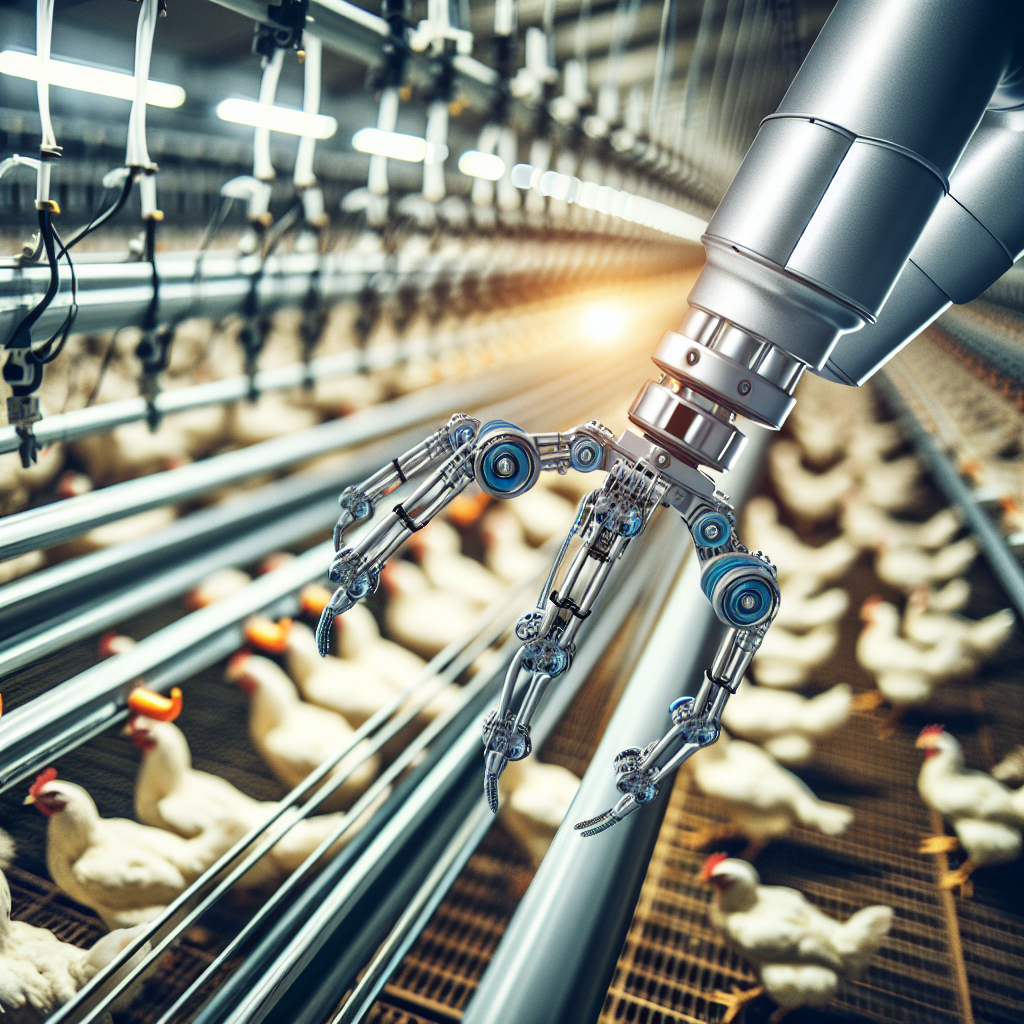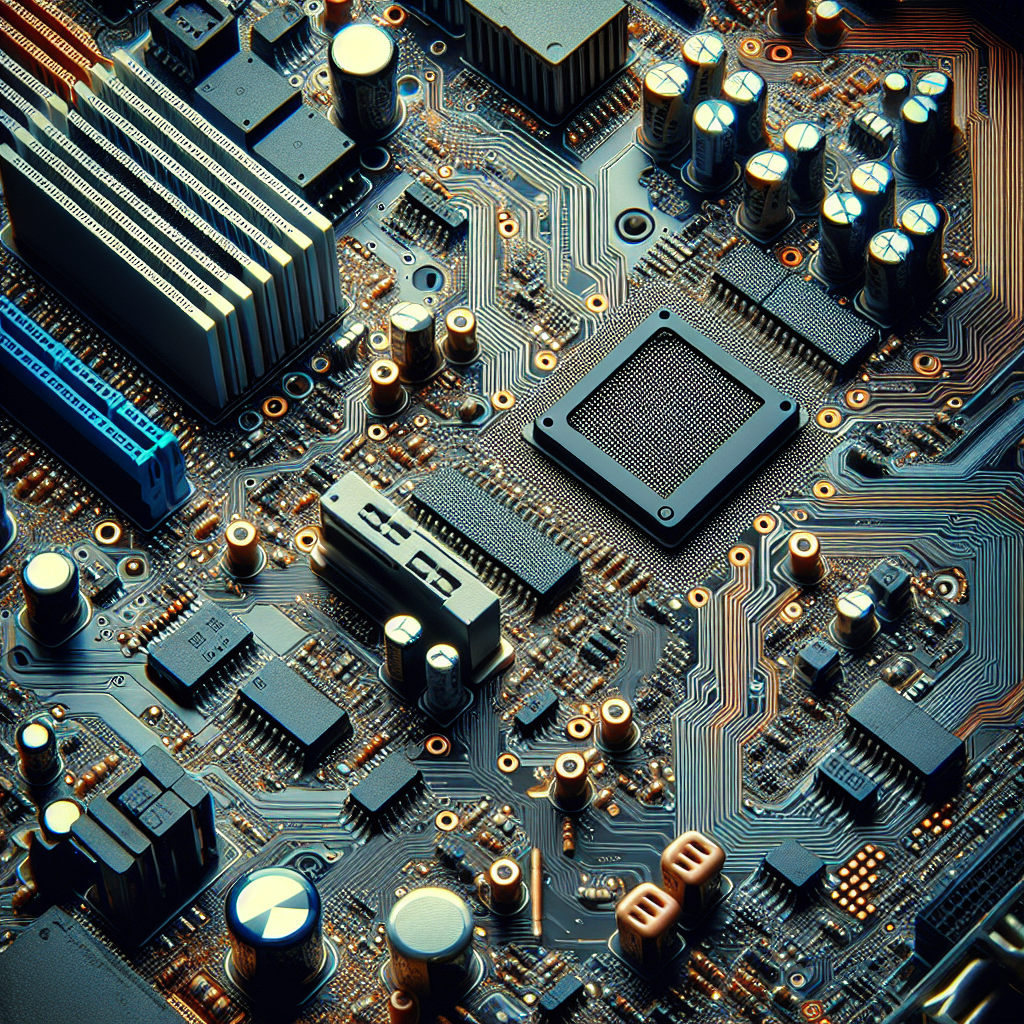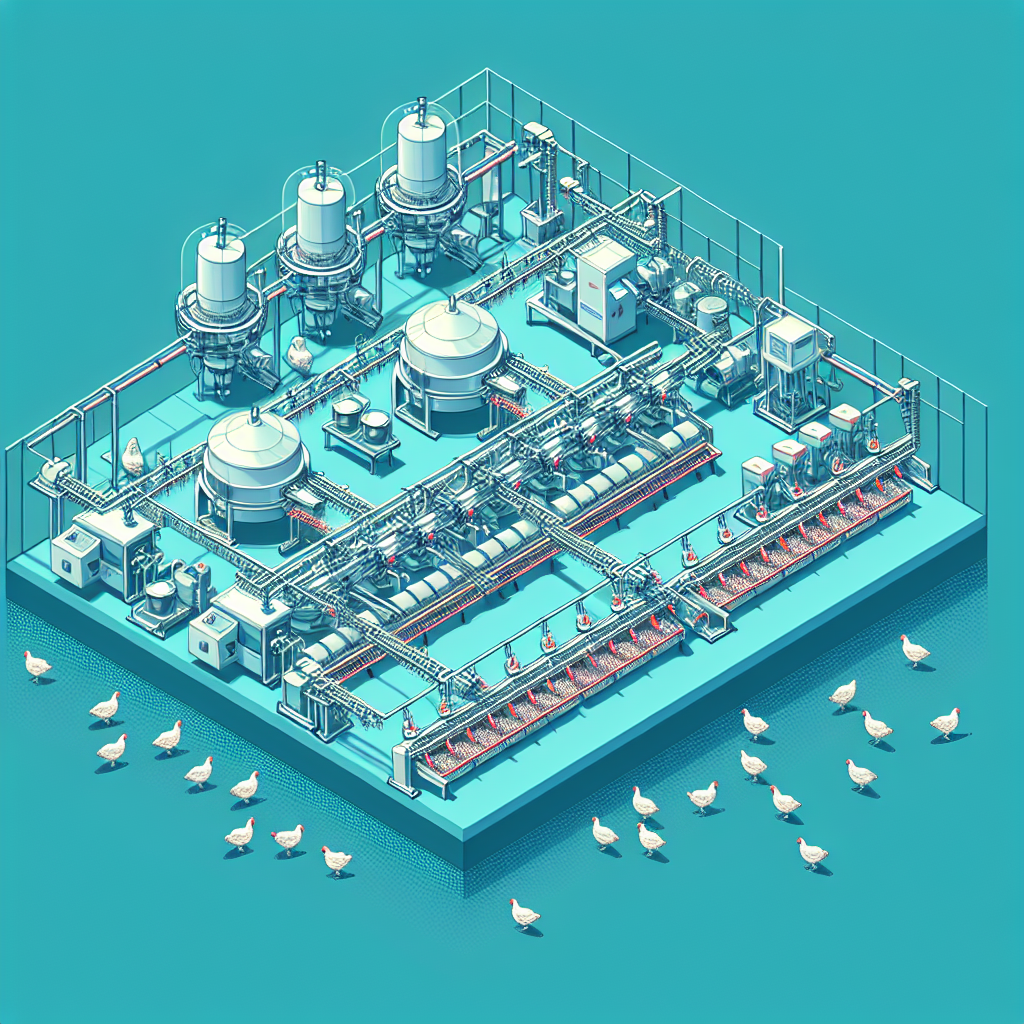Imagine never having to worry about manually feeding your chickens again. With the advancements in technology, automated feeding systems have emerged to cater specifically to the needs of your feathered friends. Whether it’s time to regulate the portion sizes, adjust feeding schedules, or provide them with the perfect blend of nutrients, these innovative systems have got you covered. Say goodbye to the hassle of measuring, pouring, and cleaning up after every meal. Discover how these automated feeding systems can revolutionize the way you care for your chickens and ensure their health and happiness. Yes, there are various types of automated feeding systems available that can cater to the specific needs of your chickens. These systems are designed to make feeding your chickens easier and more efficient, while also ensuring that they receive the appropriate amount of feed.
Types of Automated Feeding Systems
Gravity Feeders
One type of automated feeding system is a gravity feeder. These feeders consist of a container that holds the feed and a feeding tray at the bottom. As the chickens eat the feed from the tray, more feed automatically falls down from the container above. Gravity feeders are a simple and cost-effective option for providing a continuous supply of feed to your chickens.
Automatic Treadle Feeders
Another type of automated feeding system is an automatic treadle feeder. These feeders work by using a weighted treadle that chickens step on to access the feed. When the chickens step off the treadle, it closes and prevents access to the feed, helping to regulate their feeding and reduce waste. Automatic treadle feeders are especially useful for deterring pests, such as rodents and wild birds, from accessing the feed.
Programmable Timed Feeders
Programmable timed feeders are another option for automating your chicken’s feeding schedule. These feeders allow you to set specific feeding times throughout the day, ensuring that your chickens receive their feed at consistent intervals. This can be particularly beneficial if you have a busy schedule or are unable to feed your chickens manually at regular intervals.
Considerations Before Choosing an Automated Feeding System
Before selecting an automated feeding system, there are several factors to consider to ensure that it meets the specific needs of your chickens.
Number of Chickens
The number of chickens you have will determine the size and capacity of the automated feeding system you need. If you have a large flock, you may need multiple feeders or a larger feeder to accommodate all of your chickens. On the other hand, if you only have a few chickens, a smaller feeder may be sufficient.
Feeding Schedule
Consider your desired feeding schedule when choosing an automated feeding system. If you typically feed your chickens at specific times throughout the day, a programmable timed feeder may be the best option. If you prefer to provide your chickens with constant access to food, a gravity feeder or automatic treadle feeder may be more suitable.
Space Available
The amount of space you have available will also impact your choice of automated feeding system. Some systems may require more space, especially if they have larger capacities or additional features. Make sure to measure the available space in your chicken coop or run to determine the appropriate size and type of feeder.
Features to Look for in an Automated Feeding System
When choosing an automated feeding system for your chickens, there are several features to look for to ensure convenience and effectiveness.
Adjustable Portion Sizes
Having the ability to adjust the portion sizes of the feed dispensed by the automated feeding system can be beneficial. This allows you to control the amount of feed your chickens receive, which is especially useful if you have chickens with different dietary needs or if you want to reduce waste.
Easy to Clean
Regular cleaning of the automated feeding system is essential to maintain hygiene and prevent the buildup of mold or bacteria. Look for a system that is easy to disassemble and clean. Some feeders have removable parts or are dishwasher safe, making the cleaning process quick and hassle-free.
Durable Construction
Choose an automated feeding system that is built to withstand the wear and tear of daily use. Look for feeders made from durable materials, such as stainless steel or heavy-duty plastic. This will ensure that the feeder lasts longer and provides reliable service to your chickens.
Benefits of Using an Automated Feeding System for Chickens
Using an automated feeding system for your chickens offers several benefits for both you and your flock.
Consistent Feeding Schedule
With an automated feeding system, you can establish a consistent feeding schedule for your chickens. This ensures that they receive their feed at regular intervals, which is important for their overall health and well-being. A consistent feeding schedule can also help regulate their behavior and reduce stress.
Reduced Feed Waste
One of the main advantages of automated feeding systems is the reduction of feed waste. With manual feeding, chickens tend to scatter and waste feed on the ground. Automated feeders control the release of feed, preventing excessive spillage and reducing overall waste. This can help save money on feed costs and promote greater efficiency in feeding your flock.
Prevention of Pest Infestation
Automated feeding systems, such as automatic treadle feeders, help prevent pest infestations. By closing when the chickens are not actively feeding, these feeders deter pests, such as rodents and wild birds, from accessing the feed. This helps maintain a clean and pest-free environment for your chickens and reduces the risk of disease transmission.
Installation and Maintenance of Automated Feeding Systems
Proper installation and maintenance are essential for the effective operation of automated feeding systems.
Choosing the Right Location
When installing an automated feeding system, choose a location that is easily accessible for your chickens. Consider their natural feeding patterns and place the feeder at a comfortable height. Ensure that the location is protected from the elements and is secure to prevent pests from tampering with the feeder.
Assembling the Feeder
Follow the manufacturer’s instructions for assembling the feeder correctly. Check all the components and connections to ensure they are secure and functioning properly. If there are any adjustments or settings, make sure to configure them according to your specific needs and preferences.
Regular Cleaning
Regular cleaning is crucial to maintain the health and hygiene of your chickens. Follow the manufacturer’s guidelines for cleaning and disinfecting the automated feeding system. Remove any accumulated feed or debris, and sanitize the feeder regularly to prevent the growth of bacteria or other pathogens.
Additional Considerations for Specific Needs of Chickens
Different types of chickens have specific dietary and feeding requirements. Consider the following additional considerations based on the needs of different chicken types.
Broilers
If you raise broiler chickens for meat production, you may need a feeder with a larger capacity. Broilers tend to eat more and grow faster than other chicken breeds, so a feeder that can hold a significant amount of feed will ensure an uninterrupted supply for their rapid growth.
Layers
Layers, or chickens that are bred for egg production, require a balanced diet rich in nutrients. Look for an automated feeding system that dispenses a well-formulated layer feed that meets the nutritional requirements for laying hens. Additionally, consider a feeder with adjustable portion sizes to accommodate the varying feed needs of your layers based on their age and egg production stage.
Chicks
For chicks, a specialized feeder may be necessary to provide easy access to feed without the risk of them drowning in it. Look for an automated feeder designed specifically for chicks, with smaller openings or a shallow feeding tray that ensures their safety while providing them with the necessary nutrition.
Common Issues and Troubleshooting
When using an automated feeding system, you may encounter some common issues. Here are a few troubleshooting tips to address some of these issues.
Clogging of the Feeder
If the feeder becomes clogged and feed is not dispensing properly, check for any blockages or obstructions in the feeding mechanism. Clear out any stuck or compacted feed to ensure smooth operation.
Overeating or Underfeeding
Monitor your chickens’ feeding behavior to ensure they are getting the appropriate amount of feed. Adjust the portion sizes or feeding intervals as needed to prevent overeating or underfeeding. Keep in mind that individual chickens may have different appetites, so observe their behavior and make adjustments accordingly.
Malfunctioning of Timer
If you are using a programmable timed feeder and the timer is not functioning correctly, check the battery or power source. Replace or recharge the battery as needed. If the issue persists, contact the manufacturer for further assistance.
Popular Brands and Models of Automated Feeding Systems
There are several popular brands and models of automated feeding systems available in the market. Here are a few examples:
Brand A Model XYZ
Brand A offers Model XYZ, which is a programmable timed feeder with adjustable portion sizes. It features a durable construction and is easy to clean, making it a popular choice among chicken owners.
Brand B Model ABC
Brand B’s Model ABC is an automatic treadle feeder that is known for its pest deterrent capabilities. It has a large capacity and sturdy design, making it suitable for both small and large flocks.
Brand C Model DEF
Brand C’s Model DEF is a gravity feeder that is budget-friendly and easy to use. It has a simple design and is suitable for smaller flocks or backyard chicken keepers.
Conclusion
Automated feeding systems provide numerous benefits for chicken owners, including consistent feeding schedules, reduced feed waste, and prevention of pest infestation. When choosing an automated feeding system, consider factors such as the number of chickens, feeding schedule, and available space. Look for features like adjustable portion sizes, easy cleaning, and durable construction. Consider the specific needs of broilers, layers, and chicks, and address any common issues or troubleshooting. Explore popular brands and models to find the perfect automated feeding system for your chickens. By investing in an automated feeding system, you will simplify the feeding process and ensure the well-being of your flock.




